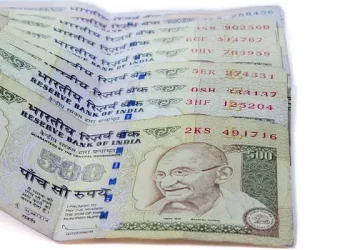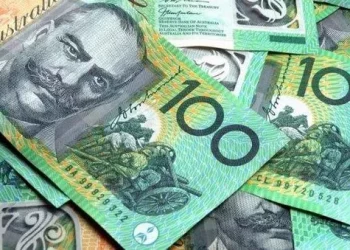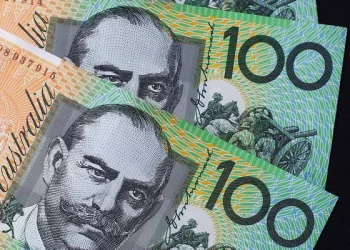In the world of foreign exchange (forex) trading, the exchange rate between different currencies plays a pivotal role in shaping the economic and financial decisions of individuals, corporations, and governments alike. One of the most widely traded currency pairs in the forex market is the Chinese Yuan (CNY) against the US Dollar (USD). Understanding the fluctuations in the value of the yuan against the dollar and how this affects forex traders can provide valuable insights into the dynamics of the forex market.
This article will delve into the value of 15,000 Chinese Yuan (CNY) in terms of US Dollars (USD), examining the factors that influence the exchange rate, how forex traders navigate currency pair fluctuations, and the trading strategies that can be employed to optimize profits in this currency pair.
What Is 15,000 Yuan in USD?
To understand the value of 15,000 Chinese Yuan in terms of US Dollars, it is essential first to recognize the concept of the exchange rate. The exchange rate is the price at which one currency can be exchanged for another. For instance, if the exchange rate between CNY and USD is 1 CNY = 0.14 USD, then 15,000 CNY would be equivalent to:
15,000 CNY×0.14 USD/CNY=2,100 USD
Thus, 15,000 Chinese Yuan would be worth approximately 2,100 US Dollars at this exchange rate. It is important to note that exchange rates fluctuate constantly due to various factors, including supply and demand dynamics, political stability, inflation rates, and interest rates.
Factors Affecting the CNY/USD Exchange Rate
Several factors contribute to the fluctuations in the CNY/USD exchange rate. These factors can be broadly categorized into economic indicators, geopolitical events, and market sentiment. Let’s take a closer look at some of the most influential factors:
1. Interest Rates and Monetary Policy
Interest rates set by central banks have a significant impact on the exchange rate between two currencies. The People’s Bank of China (PBoC) and the Federal Reserve (Fed) in the United States are the key institutions that influence the interest rates in their respective countries. When the Fed raises interest rates, the USD becomes more attractive to foreign investors due to the higher returns on USD-denominated assets. As a result, demand for the USD increases, causing the value of the yuan to depreciate against the dollar.
Conversely, if the PBoC adjusts interest rates or changes its monetary policy, it can impact the value of the Chinese Yuan. For example, a reduction in interest rates by the PBoC may lead to a weaker yuan as investors seek higher returns in other currencies, such as the US Dollar.
2. Economic Growth and Trade Balance
The economic growth of both China and the United States directly influences the CNY/USD exchange rate. When the Chinese economy grows rapidly, it can lead to an appreciation of the yuan as investors gain confidence in China’s economic prospects. On the other hand, if the Chinese economy faces challenges such as a slowdown in manufacturing, reduced exports, or lower GDP growth, the yuan may weaken against the US Dollar.
The trade balance between the two countries is another critical factor. China is a major exporter to the United States, and the trade surplus between the two nations often influences the demand for the yuan. A large trade surplus can result in an increase in demand for Chinese goods, thereby strengthening the yuan. Conversely, a trade deficit with the US can lead to a weaker yuan as the demand for the dollar increases.
3. Inflation Rates
Inflation plays a crucial role in currency values. If inflation in the United States rises faster than in China, the purchasing power of the US Dollar may diminish, leading to a depreciation of the dollar against the yuan. On the other hand, if inflation in China increases rapidly, the value of the yuan may fall as it loses purchasing power.
4. Geopolitical Events
Geopolitical events, such as political instability, trade tensions, or changes in government policies, can cause significant fluctuations in currency markets. For example, trade wars between the US and China can lead to volatility in the CNY/USD exchange rate, as market participants react to news related to tariffs, sanctions, or trade agreements.
In recent years, the ongoing US-China trade war has had a profound impact on the value of the Chinese Yuan. Tariffs imposed by the US on Chinese imports, and vice versa, have led to uncertainty in the markets, which can cause the yuan to weaken as investors seek safer currencies like the US Dollar.
5. Market Sentiment
Market sentiment refers to the overall attitude of investors toward a particular currency or asset. If traders believe that the US economy is strengthening, they may buy more US Dollars, causing the yuan to weaken. Conversely, if traders are optimistic about China’s economic prospects, the yuan may appreciate against the dollar. Market sentiment can be influenced by a range of factors, including economic data releases, political events, and global market trends.
How Forex Traders Capitalize on CNY/USD Movements
Forex traders use various strategies to capitalize on currency fluctuations, including those involving the CNY/USD currency pair. The goal of a forex trader is to buy a currency when it is undervalued and sell it when it is overvalued. Traders aim to profit from changes in the exchange rate by speculating on the direction of the market.
1. Technical Analysis
Technical analysis involves studying historical price data and chart patterns to predict future price movements. Forex traders use technical indicators, such as moving averages, Relative Strength Index (RSI), and Fibonacci retracement levels, to identify potential entry and exit points in the market. When trading the CNY/USD pair, technical analysis can help traders anticipate trends and take advantage of short-term fluctuations in the exchange rate.
For example, a trader may use moving averages to identify whether the yuan is in an uptrend or downtrend against the dollar. If the 50-day moving average crosses above the 200-day moving average, it could signal a potential bullish trend for the yuan, prompting the trader to buy the CNY/USD pair.
2. Fundamental Analysis
Fundamental analysis involves analyzing economic and financial factors that affect the value of a currency. Forex traders who specialize in fundamental analysis closely monitor economic data releases, central bank decisions, geopolitical events, and other macroeconomic factors that influence the CNY/USD exchange rate. By understanding the broader economic landscape, traders can make informed decisions about when to enter or exit the market.
For example, if the Federal Reserve is expected to raise interest rates, a forex trader may anticipate a stronger US Dollar and may look to sell the CNY/USD pair. Conversely, if the Chinese government announces economic stimulus measures that are expected to boost growth, the trader may decide to buy the yuan.
3. Carry Trading
Carry trading is a strategy that involves borrowing a currency with a low-interest rate and using it to invest in a currency with a higher interest rate. Traders typically use carry trades to profit from the interest rate differential between two currencies. In the case of CNY/USD, if the interest rate in China is lower than that of the US, a trader might borrow Chinese Yuan and invest in US Dollars to earn the interest rate differential. However, this strategy involves significant risks, as currency fluctuations can erode the profit from the interest rate differential.
4. News Trading
News trading involves taking advantage of market reactions to news events. Forex traders who focus on news trading monitor economic data releases, geopolitical developments, and other news that can affect currency prices. For example, if the US releases stronger-than-expected economic data, it could lead to an appreciation of the US Dollar, prompting traders to sell the CNY/USD pair. Conversely, if there is negative news regarding China’s economic outlook, traders may choose to sell the yuan.
The Risks of Trading CNY/USD
While forex trading offers the potential for significant profits, it also carries inherent risks. Fluctuations in the CNY/USD exchange rate can be unpredictable, and even the most experienced traders can suffer losses. Here are some of the key risks involved in trading the CNY/USD currency pair:
1. Volatility
The forex market is highly volatile, and the value of currencies can change rapidly in response to economic events, geopolitical developments, or changes in market sentiment. This volatility can lead to significant gains or losses, depending on the trader’s position.
2. Leverage
Forex brokers often offer leverage to traders, which allows them to control larger positions with a smaller initial investment. While leverage can amplify profits, it can also increase the risk of significant losses. Traders should use leverage cautiously and implement proper risk management strategies.
3. Political and Economic Risk
Geopolitical events and economic instability can have a profound impact on the CNY/USD exchange rate. Traders must stay informed about global events that may affect the value of the yuan or the US Dollar. Sudden changes in government policy, such as trade tariffs or economic sanctions, can result in sharp price movements.
Conclusion
Understanding the value of 15,000 Chinese Yuan in terms of US Dollars requires an appreciation of the dynamics of the foreign exchange market and the factors that influence currency movements. Forex traders who engage in the CNY/USD pair must be aware of the various economic, geopolitical, and technical factors that can drive price fluctuations. By employing the right strategies and staying informed about market conditions, traders can take advantage of opportunities in the forex market and potentially profit from the fluctuations between the Chinese Yuan and the US Dollar. However, as with any form of trading, it is essential to manage risks carefully and ensure a sound understanding of the market to navigate the complexities of forex trading successfully.
Related Topics:




























